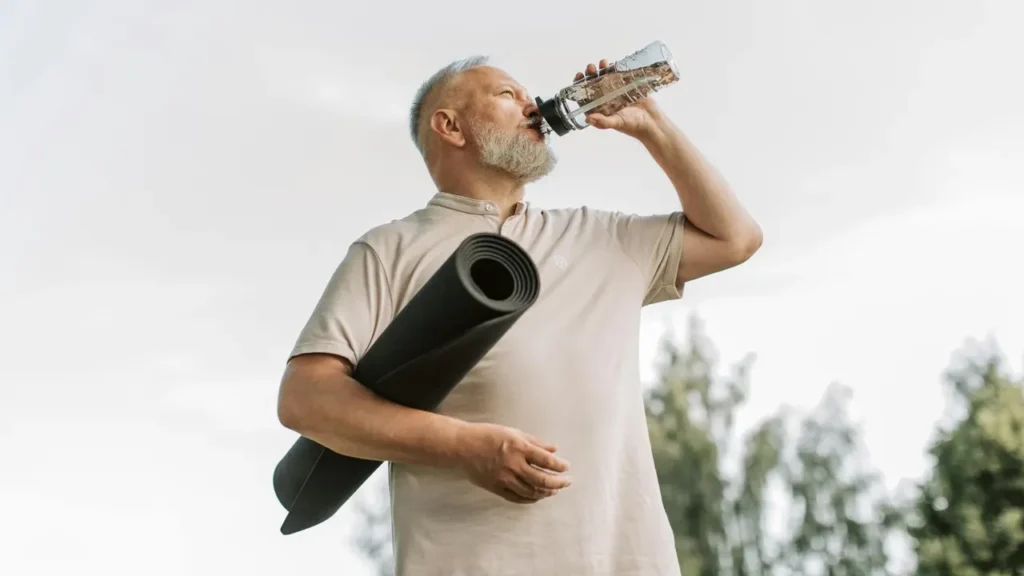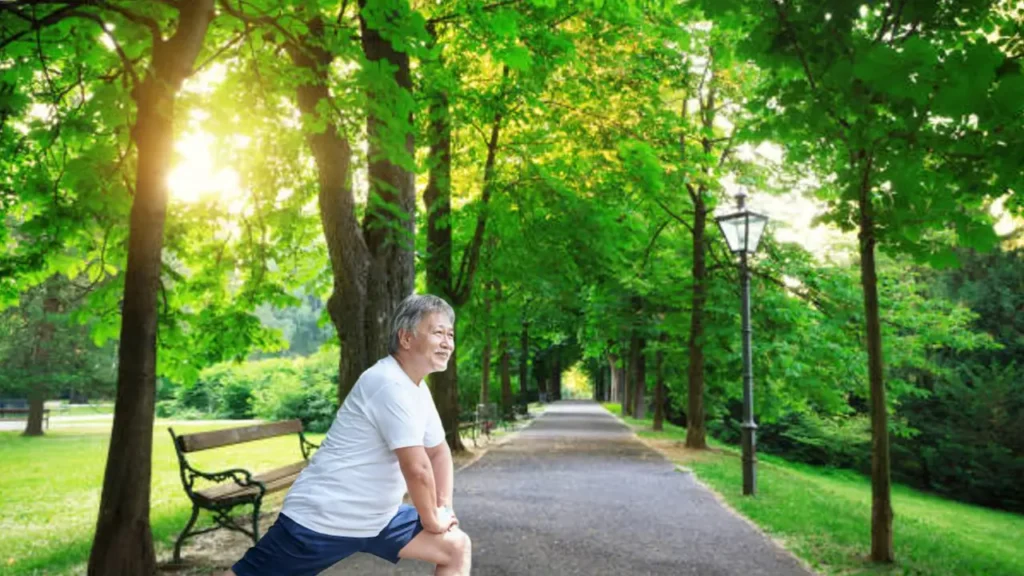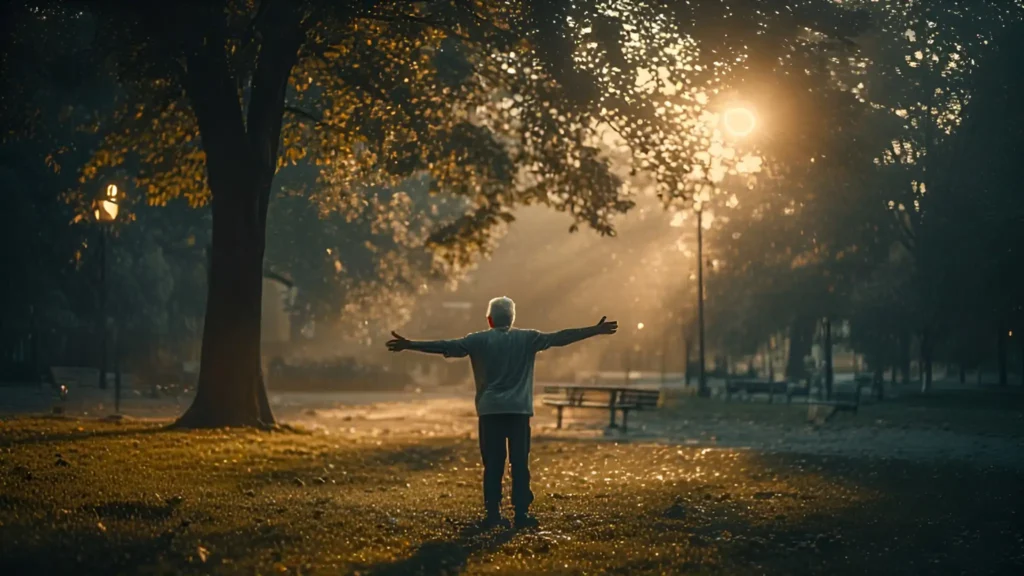Hydration affects our body. For seniors, staying properly hydrated is not just about quenching thirst—it’s a vital component of maintaining well-being. Unfortunately, many seniors are at an increased risk of dehydration due to factors such as reduced thirst sensation, and changes in kidney function.
This guide provides a comprehensive overview of practical strategies to help seniors stay hydrated. These tips aim to empower seniors with the knowledge needed to maintain optimal hydration levels. By implementing these strategies, seniors can reduce the risk of dehydration-related issues and enjoy a healthier lifestyle.
Drink Water Regularly
Our sense of thirst diminishes with aging. Seniors may not feel thirsty when their bodies need water. This reduced thirst sensation leadS to chronic dehydration if not addressed proactively.
Use smartphone apps like WaterMinder or Hydro Coach that send notifications to remind seniors to drink water at regular intervals. Alternatively, simple kitchen timers can serve the same purpose.
Place water bottles in visible and convenient locations such as next to the bed, on the dining table, near the TV remote, or in the car. Consider using lightweight, easy-to-grip bottles for seniors with limited mobility.
Drinking a glass of water first thing in the morning helps rehydrate the body after a night’s sleep, while drinking water long before bed ensures hydration during the night.
Incorporate Hydrating Foods
Foods with high water content are beneficial for seniors. Incorporating hydrating foods into the diet provides both hydration and vital nutrients.
Hydration isn’t just about water—it’s also about maintaining electrolyte balance and ensuring the body gets the nutrients it needs to function optimally. Water-rich foods contain potassium, magnesium, and other electrolytes. They are crucial for muscle function, nerve signaling, and maintaining blood pressure.
Additionally, many hydrating foods are rich in antioxidants. They can help reduce inflammation and protect against heart disease and cancer.
For seniors who may find plain water unappealing or who have difficulty consuming large volumes of liquid, hydrating foods offer a delicious and nutritious alternative. Some examples of hydrating foods:
Fruits: Watermelon (92% water), oranges (87% water), strawberries (91% water), and grapes (87% water).
Vegetables: Cucumbers (95% water), lettuce (96% water), celery (95% water), zucchini (94% water), and tomatoes (94% water).
Dairy Products: Yogurt and cottage cheese are hydrating options, though they should be consumed in moderation due to their calorie content.
Monitor Fluid Intake
Without proper monitoring, seniors may inadvertently become dehydrated. Fluid intake differs in seniors depending on factors like age, weight, activity level, climate, and overall health. Tracking fluid intake ensures that they are meeting the daily hydration goals. Monitoring also helps caregivers and healthcare providers identify patterns and potential problems early.
While individual needs vary, a common recommendation is to aim for about 6-8 glasses (or 1.5 to 2 liters) of water per day. However, this increases in hot weather, during physical activity, and if certain medical conditions require higher fluid intake.
Use water bottles with measurement markings. It indicates how much water has been consumed. For example, a 1-liter bottle might have lines showing 250ml increments. This allows seniors to visually track their progress throughout the day.
Wearable devices like smartwatches or fitness trackers monitor hydration levels and send reminders to drink water.
Limit Dehydrating Beverages
Coffee, tea, energy drinks, and some sodas contain caffeine, which has mild diuretic effects. While moderate caffeine consumption is generally safe, excessive intake leads to increased urine production and dehydration.
Alcohol is a potent diuretic that inhibits the body’s ability to retain water. It quickly lead to dehydration. Symptoms such as dizziness, dry mouth, and fatigue can be exacerbated by alcohol-related dehydration.
Moderate the consumption. Limiting coffee to one or two cups per day help prevent dehydration while still allows to enjoy the favorite drinks. A simple rule of thumb is to drink an extra glass of water for every caffeinated or alcoholic drink consumed. This helps replenish lost fluids and maintain proper hydration levels.
Instead of regular coffee or tea, seniors can opt for decaffeinated versions, herbal teas, and infused water with lemon, cucumber, and mint.
Pay attention to signs of dehydration. Dark-colored urine, dry skin, and dizziness are signs of dehydration. Ensure drinking enough water, if consume dehydrating beverages regularly.
Adjust for Weather and Activity Levels

Weather conditions significantly impact hydration needs. Adjust fluid intake accordingly. In hot weather, the body works harder to stay cool, leading to increased sweating and fluid loss. Seniors should drink water regularly, even if they don’t feel thirsty, and consider electrolyte-rich drinks if spending extended periods in the heat.
Cold weather can be deceiving. Dry air and increased respiratory water loss may lead to dehydration without noticeable thirst cues. Humid or windy conditions further elevate the risk of fluid loss. Maintaining consistent hydration is key to staying healthy and comfortable.
Physical activity, even light exercise like walking or gardening, increases the need for proper hydration among seniors. While low-intensity activities don’t cause heavy sweating, regular water intake is still necessary to support overall well-being.
For more moderate activities, such as swimming or dancing, drinking small amounts of water before, during, and after help prevent dehydration. It’s also important to replenish fluids after any physical exertion to aid recovery.
Recognize Signs of Dehydration
Dehydration can escalate quickly in seniors. leading to serious health complications such as urinary tract infections, kidney stones, heatstroke, or even hospitalization. Identifying the signs of dehydration is hard for seniors. Many of them are unable to recognize when they need fluids.
Dehydration symptoms range from mild to severe and should never be ignored. Mild dehydrationpresents as a dry mouth, fatigue, headache, dizziness, and dark urine. These early warning signs indicate that the body needs fluids and should be addressed promptly.
If left untreated, dehydration can progress to severe dehydration, which includes alarming symptoms like confusion, rapid heartbeat, low blood pressure, fainting, and seizures. For seniors, these symptoms can be particularly dangerous.
At the first sign of dehydration, it’s crucial to act quickly. Seniors should drink water immediately to replenish lost fluids. If symptoms worsen, seeking medical attention is essential to prevent complications. In cases of mild dehydration, oral rehydration solutions—such as Pedialyte or homemade salt-sugar water—help restore electrolyte balance and provide faster relief.
Flavor Water
For some seniors, plain water may seem unappealing. Adding natural flavors to water is an excellent way to make hydration enjoyable. By incorporating simple, healthy ingredients, seniors can transform their water into a refreshing drink.
There are many easy and creative ways to enhance the taste of water. One popular method is to infuse it with fresh fruits, vegetables, and herbs. For example, slices of citrus fruits like lemon, lime, and orange can add a bright, tangy flavor, while berries such as strawberries or blueberries provide a subtle sweetness.
Herbs like mint and basil offer a refreshing twist. Simply add these ingredients to a pitcher of water and let it sit for a few hours to allow the flavors to meld. Herbal teas, such as hibiscus, ginger, and chamomile, are another great option. They provide soothing and aromatic alternatives to plain water without the caffeine found in traditional teas.
By experimenting with these simple techniques, seniors can discover new and appealing ways to stay hydrated.
Encourage Social Hydration
Social interactions play a powerful role in motivating seniors to drink water. For many, staying hydrated can feel like a chore, but incorporating it into social activities can make it enjoyable and rewarding.
Sharing meals, and conversations can create positive associations with hydration. This turns it into a natural and pleasant part of daily life. This approach boosts fluid intake.
One effective way to promote hydration is through family meals. Encouraging family members to join seniors for meals or snacks while keeping water readily available.
Participating in group activities at senior centers or community groups can help reinforce healthy habits. Many of these organizations offer programs that emphasize wellness, including hydration.
Staying hydrated is a cornerstone of senior health. Hydration impacts everything from cognitive function to physical well-being. By implementing these strategies seniors can maintain optimal hydration levels and reduce the risk of related health issues.




